Articles
Le capteur CRUZOE est un capteur aérien utilisant la technologie radar. Son utilité première est de réaliser la mesure et la surveillance de hauteurs de liquides stables ou en mouvement : dans l’immense majorité des applications, il s’agit de mesurer un niveau d’eau.
Le capteur radar CRUZOE est conçu spécifiquement pour une utilisation en milieu extérieur.
On choisit avant tout le CRUZOE pour sa gamme de mesure : il se situe dans une gamme de mesure à 30m et possède un protocole de communication en MODBUS, particulièrement adapté pour une utilisation en rivière.
Les avantages principaux du capteur CRUZOE sont sa forme compacte en hauteur, sa mise à l’horizontale automatique et sa faible consommation : dans un lieu isolé sans énergie, 2 secondes d’alimentation suffisent pour obtenir une mesure.
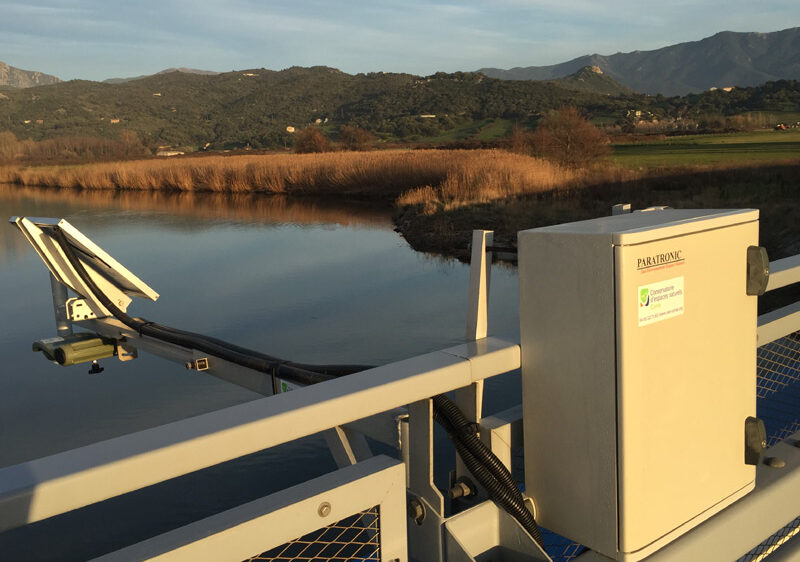
Différentes applications d’utilisation sont possibles pour le capteur radar CRUZOE : mesure de rivières, assainissement, cuves…
L’application la plus courante est la mesure de rivière, fixé sous un pont ou à l’aide d’une potence. Le système de mise à l’horizontale automatique du CRUZOE, permettant la correction de défauts d’assiette jusqu’à 10°, est particulièrement intéressant pour une utilisation sous un pont. En effet, cela permet d’utiliser un système de potence facile à descendre et relever. En plus d’éviter l’intervention d’un cordiste, cette fonctionnalité permet également d’obtenir un réglage fin du produit en toute simplicité, sans nécessiter de niveau à bulle.
L’horizontalité est capitale car si jamais le capteur radar venait à présenter un défaut de positionnement, l’onde radar ne se propagerait pas perpendiculairement au liquide et au mieux la mesure serait faussée, au pire l’onde serait propagée plus loin et le capteur ne réaliserait aucune mesure. Opter pour un capteur radar CRUZOE PARATRONIC permet d’éviter ces problèmes.
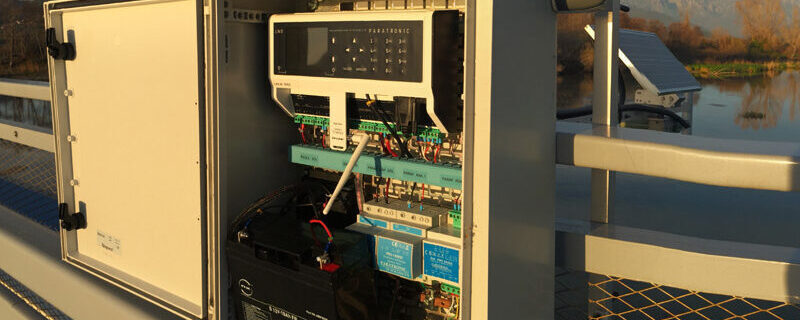
Le paramétrage d’usine du capteur CRUZOE vous permet de l’utiliser directement en le branchant sur l’acquisition de votre choix (station d’acquisition ou data logger intégrant les fonctionnalités de base pour la mesure hydrologique) sans aucun paramétrage supplémentaire.
Cependant, si vous souhaitez modifier les réglages, par exemple pour obtenir une mesure de niveau au lieu d’un tirant d’air, vous pouvez le paramétrer à votre guise à l’aide de l’adaptateur ADP USB et de notre logiciel libre IHM Capteurs (que vous pouvez télécharger gratuitement sur notre site).
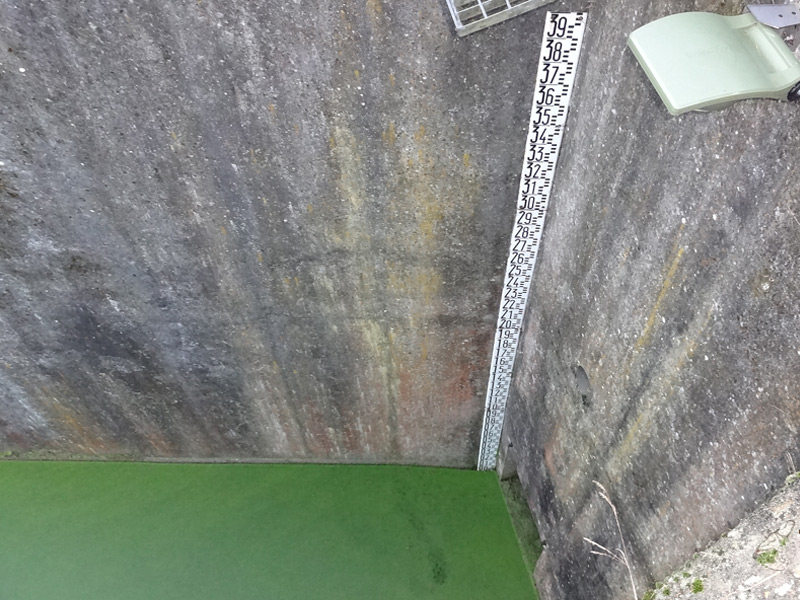
Pour rappel, le tirant d’air est la distance entre la surface de l’eau et le capteur tandis que le niveau d’eau est la distance entre le fond de l’eau et la surface.
Les deux données ont leurs utilisations, cela dépend des pratiques de votre secteur. Cela peut aussi être une question de paramétrage : par défaut, nos systèmes sont réglés en tirant d’air, donc travailler avec cette valeur vous permet de ne pas avoir à reparamétrer le capteur et l’acquisition.
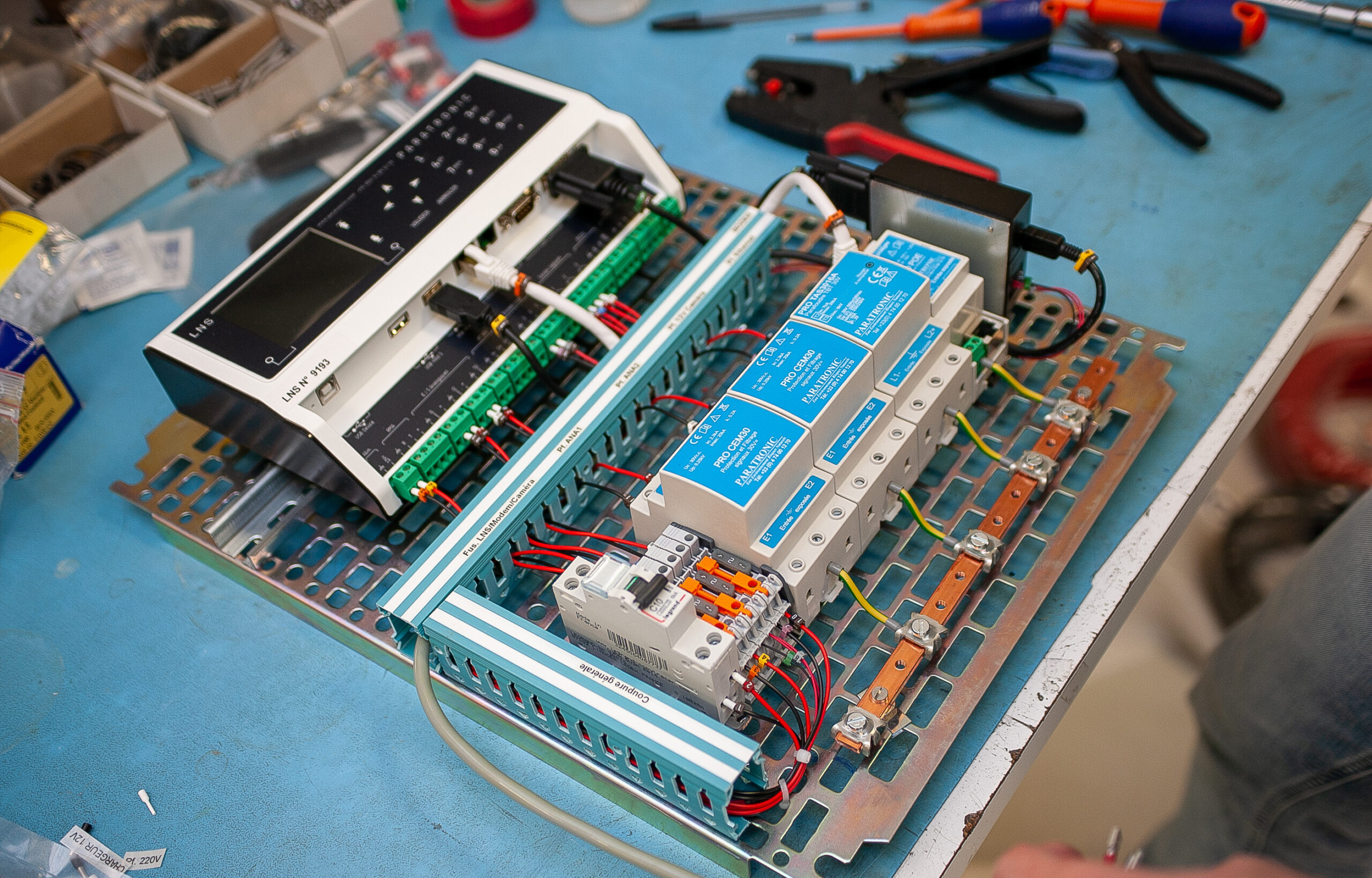
L’acquisition la plus appropriée pour le capteur CRUZOE est notre station LNS, qui possède une entrée en MODBUS. En effet, la plupart de nos enregistreurs comme le MAC fonctionnent avec d’autres protocoles de communication. Si vous préférez une solution qui communique en 4-20mA, nous vous conseillons d’opter pour un autre modèle de capteur radar, le CR420.
Le capteur radar CRUZOE peut également être connecté à un TBRS : un émetteur-récepteur radio qui fonctionne à l’énergie solaire. Cette installation, particulièrement utilisée en hydrométrie, permet de déporter la mesure pour la ramener vers la centrale d’acquisition. Opter pour un TBRS vous évite de connecter vos systèmes par des câbles. Cela peut s’avérer nécessaire sur des ponts, par exemple : en France, les ponts sont soumis à de nombreuses normes. La plupart des ponts ne peuvent pas être percés, pour des raisons structurelles et esthétiques. Il est donc impossible d’y installer un chemin de câbles.
Les deux capteurs fonctionnent avec une technologie radar. Les principales différences entre ces deux produits résident dans leurs applications et leurs protocoles de communication.
Le protocole de communication du CRUZOE, le MODBUS, transmets plusieurs informations : la mesure en elle-même (hauteur d’eau), la qualité du signal, la mesure moyenne à 4 secondes et à 16 secondes… En revanche, le protocole du CR420, un signal en 4-20Ma, ne transmet qu’une seule information : la mesure.
Les gammes de mesure sont également différentes : le radar CRUZOE a une gamme de mesure de 30m (soit un tirant d’air maximal de 30m) tandis que le CR420 a des gammes de mesure de 6, 10 et 12m.
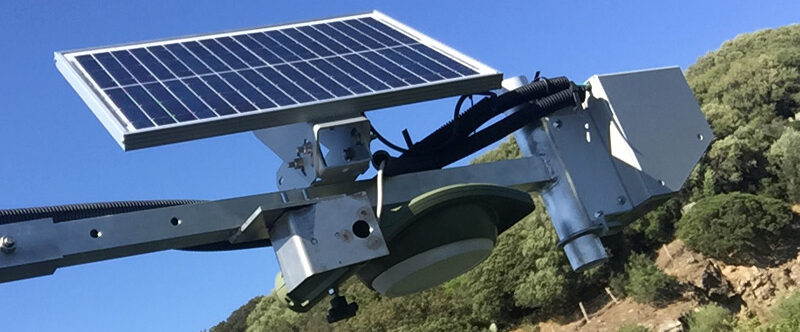
Une simple alimentation 12 Volts permet l’alimentation du capteur et pour rappel son faible temps de chauffe permet de travailler sur des sites dépourvu d’énergie
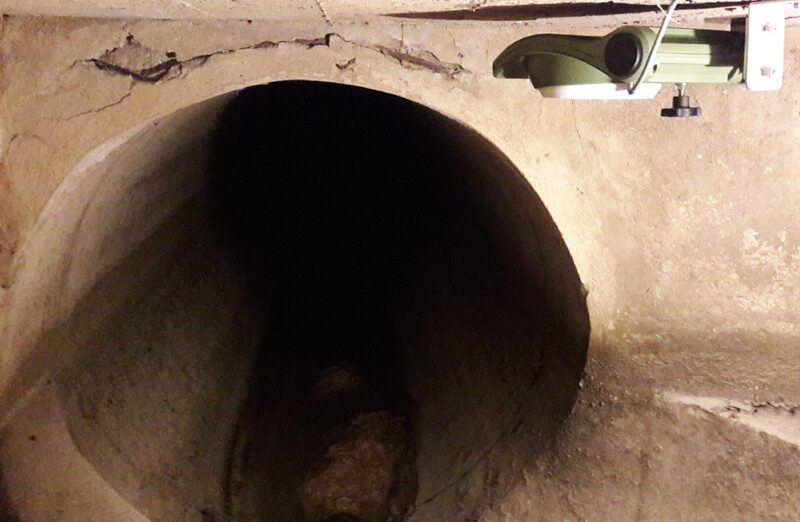
Le capteur CRUZOE fonctionne grâce à une technologie radar, donc en comparaison avec des capteurs piézométriques par exemple, il ne requiert aucune maintenance. En effet, les sondes piézométriques peuvent subir une légère déformation mécanique au cours du temps, ce qui cause une dérive de la mesure ; les capteurs radar ne possédant pas de cellule mécanique, ils n’ont aucune raison de varier dans le temps.
Ce capteur ne nécessite pas non plus de vérifications particulières. Dans l’absolu vous pouvez aller vérifier si son horizontalité est toujours parfaite (le système automatique peut être déréglé par un choc ou le contact d’un embâcle), ou essuyer d’éventuelles toiles d’araignées sous sa surface.
En revanche, lors d’une utilisation en déversoir d’orage, il peut arriver que le capteur s’encrasse, ce qui nécessitera alors un nettoyage un peu plus attentif.
Il y a autant d’applications possibles que de besoins liés à la mesure de niveau d’eau. En rivière par exemple, le capteur CRUZOE vous permettra de réaliser un suivi du cours d’eau à long terme, de lancer des alertes en cas d’inondations, de surveiller les étiages et le manque d’eau…
Le CRUZOE est idéal pour la mesure de fortes hauteurs d’eau. ce qui est particulièrement pertinent pour la surveillance des inondations.
En revanche, le capteur perd en précision à mesure que la hauteur mesurée s’éloigne de lui, ce qui le rend moins adapté pour la surveillance des étiages. Il est tout à fait capable de détecter le manque d’eau, mais si vous souhaitez obtenir une mesure d’étiage au millimètre près, nous vous conseillons d’opter plutôt pour une autre technologie. Nos commerciaux vont se déplacer sur votre site pour évaluer la technologie la plus adéquate pour l’usage que vous lui réservez, et la gamme de produit qui correspond chez PARATRONIC. Pour l’étiage, nous vous recommandons l’usage d’un capteur piézométrique, et plus particulièrement le capteur SNA.
Le capteur radar CRUZOE est garanti 2 ans, risques foudre inclus (leur immunité native face aux surtensions les rend parfaitement résistants aux chocs de foudre).
Le SAV, chez PARATRONIC, s’effectue en France et dans des délais très courts. Notre service performant est soutenu par notre maîtrise du savoir-faire et nos interlocuteurs dédiés.
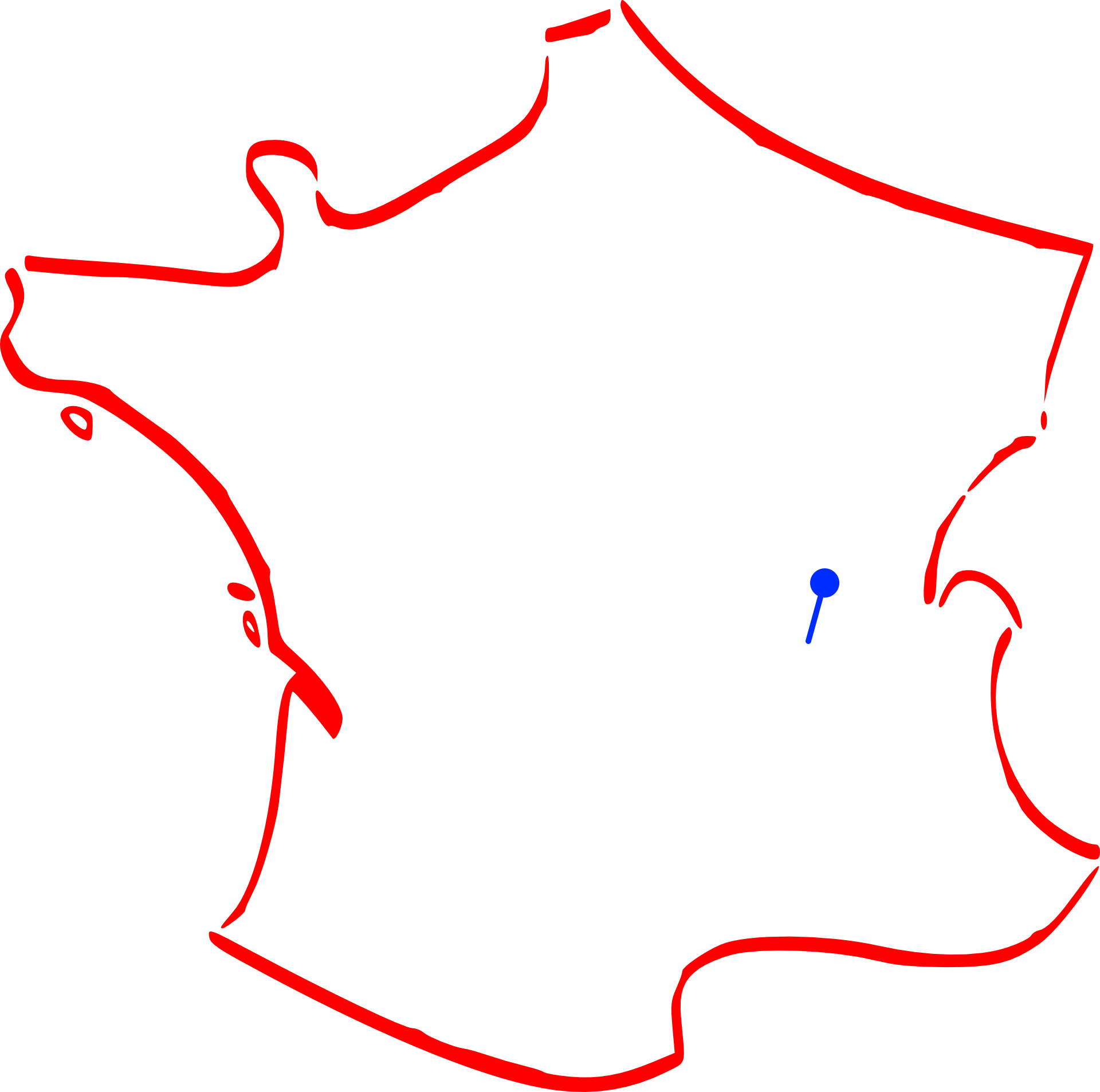
Comme l’essentiel de nos produits, le capteur radar CRUZOE est fabriqué ici, en France, dans notre usine de Reyrieux. Il a également été conçu et fiabilisé chez PARATRONIC à Reyrieux.
Notre FAQ n’a pas répondu à toutes vos questions ? N’hésitez pas à nous contacter pour plus d’informations.